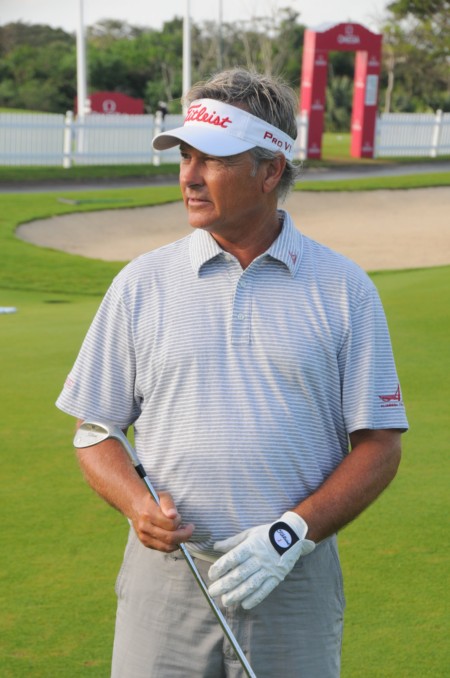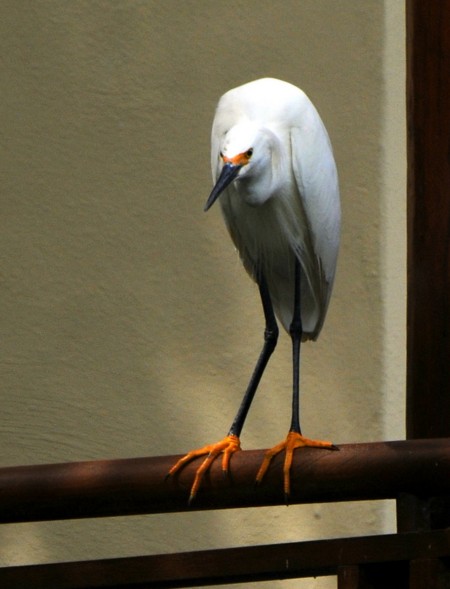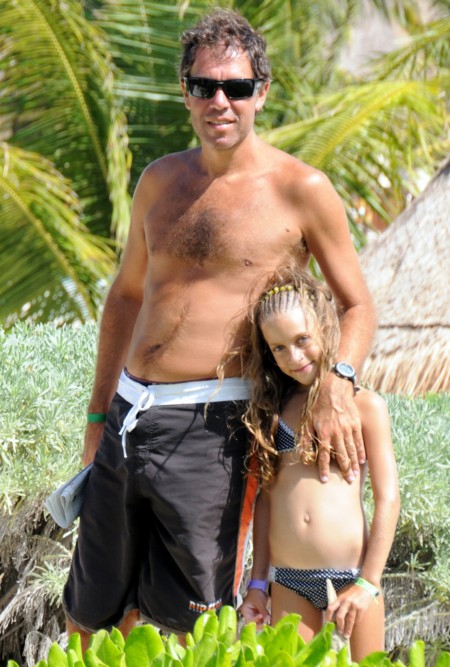(Geek Alert: This post will likely bore the hell out of all potential readers except the sub-category of golfers who know their handicaps to the tenth of a point.)
Most golfers who maintain a handicap think they know what the number represents. It’s the strokes they need to compete on even terms with a scratch player, even a touring pro. More sophisticated golfers know that, in reality, touring pros would have handicaps better than scratch if they bothered to enter their scores in a handicap computer. But even the sophisticated amateur probably figures that if he’s a 10, a touring pro might be a plus 5, meaning that the amateur would need 15 strokes to compete evenly.
I have long suspected that the amateur handicap is a delusion. It makes the amateur think he’s better than he really is in comparison to the pros. I suspect that if the average amateur had to play on courses the pros play, set up as they are for pro tournaments, and count every stroke, he would find that he’d need roughly double his handicap strokes to balance the scales.
I am not the first to think this way. Sam Snead used to supplement his Tour winnings by playing money games with guests at the Greenbrier. Snead would ask the marks to tell him their handicaps. He would cheerfully give them the number of strokes they specified. Then he’d wipe them out. He knew that giving amateurs just their handicap strokes was like getting their ATM cards, complete with PINs.
I recently had a chance to put this theory to a test of sorts. In Cancun on a golf writers’ trip, I was invited to play the site of the PGA Tour’s Mayakoba Open on the day after the tournament. The holes would be in their Sunday locations. The greens would be at tournament speed. We amateurs would not be playing the back tees the pros used. But otherwise, the course, called El Camaleon, would be what the pros had played.
The sponsors even provided pros with whom I could chat about my notion. At breakfast, John Cook sat down at my table. He would be doing a pre-round clinic for the tournament sponsors’ guests, along with David Duval, Fred Funk and Esteban Toledo. During the round, each pro would be stationed at a par three hole. They’d play the hole with each amateur group that came through.
I asked Cook how he thought amateur handicaps really stacked up. He extended his hands about three feet apart. “We putt all these out,” he said. “Amateurs don’t.” He gestured toward Funk. “If Fred and I had made all the three-footers during our careers, we wouldn’t be doing exhibitions. We’d be living on an island somewhere, retired.”
“When I play with amateurs, I generally give them four extra strokes beyond their handicaps,” Funk said. Cook nodded.
My handicap index is currently 10.6. For the El Camaleon course, with a slope of 123 from the tees we’d be playing, my course handicap would be 12. Taking Funk’s four extra pops, I’d have 16 strokes on the average touring pro. (I’m going to forget about the fact that the touring pro would be playing tees an average of 50 yards behind mine.)
But what is an average touring pro’s score on El Camaleon? The winner of the Mayakoba Classic, John Huh, shot 63 on Sunday to finish at 13 under par. That tied him with Robert Allenby, who double-bogeyed the 72nd hole, then lost on the eighth playoff hole. But neither Huh’s 63, nor the winning total of -13, was really average. The cut at the Mayakoba Classic was 145, three strokes over par. So I calculated that, roughly speaking, the average touring pro went around Mayakoba in maybe 73 strokes. (It gets more complicated. The best 64 touring pros were not at Mayakoba; they were at the World Match Play Championship. So the field at Mayakoba was probably less skilled than average. But lest I reveal my handicap in higher math by attempting to calculate some sort of compensation factor, I am going to ignore that, too.) My bottom line was that, with my Funk-adjusted handicap of 16, I should have been able to break 90 at Mayakoba if my handicap represented what it supposedly did.
My education began almost immediately. My group started on No. 10, a par three playing about 145 yards (compared to 200 yards from the tournament tees) to a hole cut in the back right corner of the green. I hit a nice, solid 7-iron that flew straight toward the middle of the green. On the courses I normally play, the shot would have given me a birdie putt. But El Camaleon, set up for Sunday play, was harder. The prevailing wind was at my back, making it harder to stop the ball. The corner of the green where the hole was cut sloped away from the player. The upshot was that to get a tee shot close to the hole, a player had to be extremely precise. I wasn’t precise enough. My shot carried a few yards further than I’d expected. It hit the downslope. It rolled right off the slick green into the rough beyond.
John Cook, as it happened, was the pro playing No. 10. Not an hour earlier, I had listened to him give a short-game clinic. My head was full of the chipping tips he’d given. Keep the lower body still. Let the length of the swing determine the trajectory. I took a few practice swings, conscious that Cook was watching (and probably thinking about how long his day would be if every amateur took as much time over chips as I was taking). I felt pressure–maybe a bit like a pro who hits every stroke in front of an audience feels.
I lunged at my chip and half-skulled it, sending it 30 feet past the hole. I made bogey. The average pro would have gotten my ball up and down for par maybe 90 percent of the time.
I suspect that this hole illustrates nicely that the largest part of the difference between touring pros and amateurs is not how much longer the touring pros hit the ball, though they do. It’s their precision and finesse. Playing well, a touring pro would have been able to drop his tee shot down on the green near the hole and make it stick. Playing not so well, he still would have been able to get up and down for par. I couldn’t do either one. If I had been playing from the tournament tees, I most likely would still have made a bogey, missing the green with my hybrid 3-iron and not getting up and down. Deftness, not distance, was my downfall.
That was certainly the case on the next hole, a short par four. From the white tees, my drive left me only 100 yards to the hole. But the hole was cut close to the left edge of the green, just beyond a deep bunker. Not being a precise wedge player, I aimed well right of the flag. I hit the shot hole high, and it stayed on the green. But I was left with a 40-foot putt over a swale. I gave too much respect to the speed of the greens and left my first putt six feet short. I missed the second. Again, lack of precision cost me a bogey on a hole the touring pros universally looked at as a birdie opportunity.
And so it went. I threw away strokes around most greens. I made a few pars. (In a demonstration of the sheer perversity of the game, one of those pars came on No. 18, where I managed to chip close and tap in. Allenby would gladly have traded scores on that one hole.) But I also had three blow-up holes, where I hit balls into the jungle or into a canal. On those shots, I was usually trying to hit a ball too hard, trying to recover from a mediocre drive. Once or twice, I let the irritation from doing that cause me to play carelessly, quickly and thoughtlessly. Those were also traits that generally separate pros from amateurs. Pros swing within themselves and they rarely lose focus the way I did. Otherwise, they don’t remain touring pros.
At the end, my card read 93. Though I’d played the course from 6,200 yards instead of the pros’ 7,000, I didn’t come close to the score my course handicap said I should have made, which would have been 84. I didn’t even match the score I should have made with the four extra strokes Funk and Cook would have added to my handicap. Playing a shorter course, I was 30 strokes worse than John Huh had been the day before, nearly three times my handicap index.
So if, this summer, I manage to get my handicap index back under 10, I am going to look at it with a certain humility. I might be a single-digit player. But I still won’t be within 25 strokes of really good.



